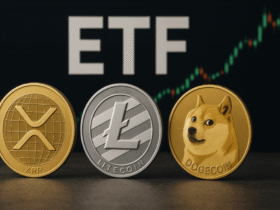Various financial assets are experiencing an upward trend.
For the financial bulletin, “the market is broken.”
The two main oil price indices today reached levels they had not seen in almost two months. West Texas Intermediate (WTI) surpassed the mark of 78 dollars (USD) per barrel, while Brent crude oil (BRENT) surpassed USD 80.
With those movements, They sharpen the upward trend that began last week with the escalation of war between Israel and Iran. This situation brings into play a turning point with respect to the bearish streak that the oil market showed this year.
“Oil prices are rising as if we were heading towards World War III,” comment the analysts of the financial newsletter ‘The Kobeissi Letter’. Although, they indicate in an analysis in this regard that, given the current environment, the prices “should be much higher.”
In a war context, the demand for oil usually rises for military activities in anticipation of possible supply cuts and as a reserve of value due to its scarcity. Furthermore, with the expected soft landing in the United States, which refers to the drop in economic growth that avoids a recession, this market could remain solid.
“If we are really on the path to a ‘soft landing’ and wars are breaking out, why don’t oil prices exceed $100?” they ask from The Kobeissi Letter.
In his view, the reason is that This behavior of the energy market is part of a much broader and contradictory economic context. On the one hand, “stocks are rising as if we’ve avoided a recession,” they say. But, on the other hand, they contrast that the price of gold is increasing as we go.
In fact, gold is at all-time high prices, as are the main stock stocks, as reported by CriptoNoticias. In addition, they emphasize that US bonds have risen again after the interest rate cut established last month for the first time in more than four years, which should be the other way around given that such a policy lowers its profitability.
In addition, technology stocks are rising as if risk appetite is at record levels. Meanwhile, heThe prices of bitcoin (BTC) and cryptocurrencies have continued in a lateral corrective period for seven months as if the opposite were happening, they say. This can be seen below.

On the other hand, shares of major weapons manufacturers have reacted higher to Iran’s attack on Israel last week. With this, some reinforce the upward trend they have perceived in recent years, such as Lockheed Martin (LMT) and RTX Corporation (RTX), also driven by the war conflict between Russia and Ukraine.
Analysts at The Kobeissi Letter summarize that it is “the epitome of a broken market.” In other words, it shows that investors are trying to protect their capital in an environment of global uncertainty. “Markets are incorporating a variety of scenarios into their prices until 2025,” they say.
Given greater clarity about the global environment, It is possible that some financial assets reverse the trend they are showing. In the event of an intensification of geopolitical tensions, those that are considered a store of value such as oil, precious metals and bitcoin, if their narrative as “digital gold” grows, could benefit.
On the other hand, in the face of geopolitical stabilization and macroeconomic improvement, demand for safe haven assets could decline as risk appetite grows. This could motivate stock market and cryptocurrency prices, as well as bitcoin among those looking to take advantage of its high volatility.
High volatility is possible for financial markets
For the specialists of the financial bulletin, the current panorama means that markets appear to be starting to price in another spike in inflation. He warns that this is also motivated by the large fiscal stimulus and interest cuts in China to boost the economy.
In the eastern country, “they are desperate because property prices are plummeting and consumer confidence is near historic lows,” they explain. This explains part of the movements seen in financial assets. “In a global economy, what happens in China should affect all markets,” they highlight.
“CPI inflation could very well adopt a trajectory similar to that of the 1970s,” analysts exclaim about the United States. This forecast is based on the fact that, for a decade, the trend prior to the strong inflationary wave seen then has been forming, as shown in the following graph.

With this panoramathey visualize more price volatility by 2025. “Avoid biases and this market will be incredibly profitable,” they conclude as advice to investors.






Leave a Reply